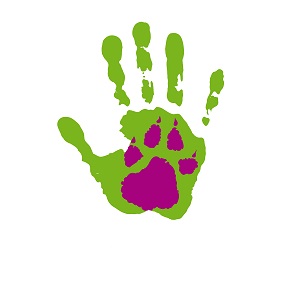Can Play Therapy Help My Aggressive Dog?
One of the most exciting, and controversial therapies in the dog world is play therapy.
Can you overcome fear and aggression using play? If you ask a wolf researcher they will tell you that packs with ‘good’ leaders, where play is contagious, there is an absence of many behavior problems.
If you ask some of the world’s renowned canine behaviorists like Susan Clothier they will agree that play counter condition’s fear.
It is the premise of the ‘treat party’ and the ‘scatter’ therapies used with reactive dogs.
Does Play Reinforce Fear Behavior?
Some of the people who disagree with play therapy state that you are not counter conditioning by associating fear with something pleasurable. They claim that you are reinforcing the fear. But research, and my own experience states otherwise.
To understand whether this is true with your dog you need to understand what a reinforcer is. When you pair a reinforcer with a behavior you want to continue, then you increase the chances of the behavior continuing.
Will It Work With My Dog?
If your dog is lunging or barking and you reinforce that behavior then the dog will continue to lunge and bark. But what if your dog is reacting to fear stimuli? What if your dog is just saying ‘I’m afraid – Get away?’ Then by playing with the dog you are adding ‘good feelings’. The dog is learning that the scary thing will not hurt them. The dog is learning that it can trust you.
So the problem isn’t, ‘can I counter condition fear’. The problem is, how do you know whether the problem is fear based or an aggressive behavior. The only one who can truly answer that is someone with hundreds of hours of study into animal behavior.
This isn’t an obedience problem. You cannot ‘correct’ your dog out of a fearful reaction.
What Can I do?
If you cannot work with a behaviorist then I suggest:
- Do not force your dog to endure fearful situations
- Do not force the dog to ‘act’ in a way that causes stress.
- Do not force your dog to ‘face its fears’
- Do not rely on just ‘stuffing treats’ into the dog’s mouth as a management/cure.
- Do not correct your dog for a fear based reaction.
- Have someone video your dog so that you can see its cues ‘from the side view.’ We sometimes miss things when looking over the ears.
- Learn to listen to your dog. If you will listen the dog will ask for help.
- Redirect your dog before an encounter, or as soon after as possible. Diffuse the situation and give the dog something ‘happy’ to think about.
How to Try Play Therapy?
Play therapy is easy for dogs with a high ball drive. It is very similar to puppy socialization with high drive dogs. Go into the environment but stay away from the trigger. The dog does not need to engage. Play with the dog.
It is very simple. Maybe that is why some people dismiss it, because it is too simple. Do not go to far towards the dog’s trigger. Stay well behind threshold.
Redirect the dog with play. Let the dog look at the trigger and watch to see if the dog returns its attention in less than 5 seconds. If not, add more distance. The dog is a good distance when it acts like the trigger is not there.
For more information read “Harley’s Story”
